Vintage style is a trend that has captured much of the RV industry lately. Why buy a bland white box when you can get something that would turn heads at the campground and on the highway? I just stumbled upon an obscure brand with a great idea. This is the Vintege Skye, and it’s a tiny new 14-foot-long camper that looks like it’s at least 50 years old, but is built with a modern all-steel construction. I love it, except for a few issues.
Modern vintage campers aren’t a new concept. That’s the business model that has worked so well for Airstream and Scamp over the decades. Retro style is in right now, too, and every company is getting in on it, from car companies and aircraft manufacturers to motorcycle builders and home decor companies. In the RV world, we’ve seen the rebirth of Holiday House and Bowlus, plus new entrants like Happier Camper and Cortes Campers. Even industry giants like Winnebago are in on it.
The cool thing about these new builds is that a lot of them use modern construction techniques and technology. So you get a camper that looks old, but you don’t have to deal with wiring that’s older than you are. Some of these new rigs are also built well. There’s a reason why Scamp has so many fans!
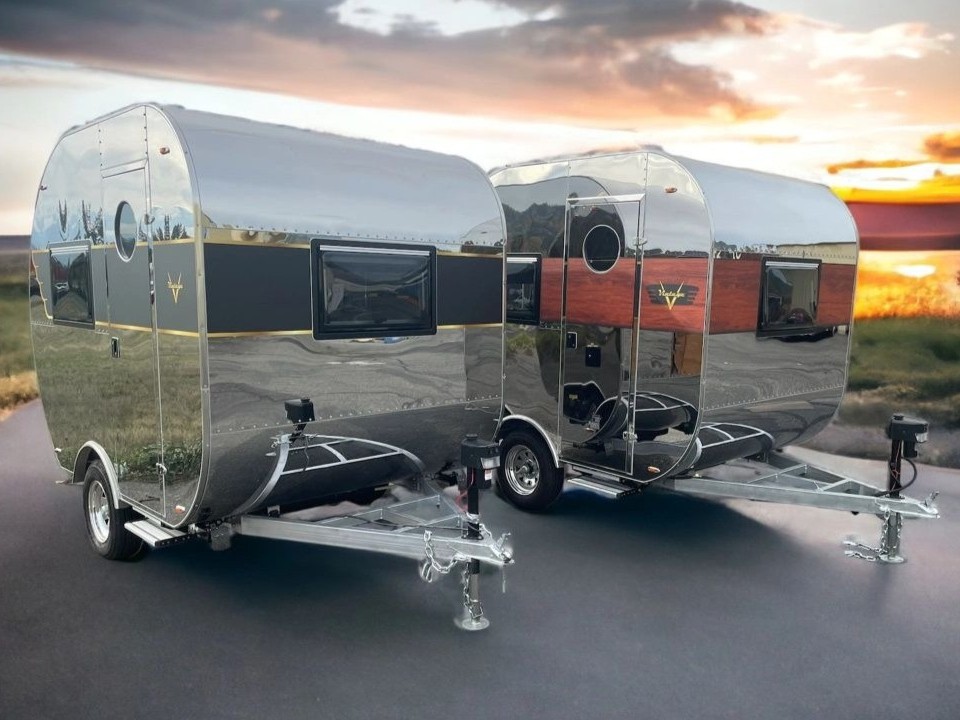
Vintege, Not Vintage
The Vintege Skye is a remix of a familiar formula. It’s a tiny trailer like a Happier Camper or a Scamp, but instead of fiberglass, it’s built out of mostly stainless steel and then polished to a mirror-like shine.
Vintege Trailers is a brand of UtilityMate Manufacturing of Grants Pass, Oregon. Vintege’s parent company specializes in energy-efficient building materials, trailers that turn into tiny houses, deployable instant shelters, affordable pre-fabricated buildings, and other products.
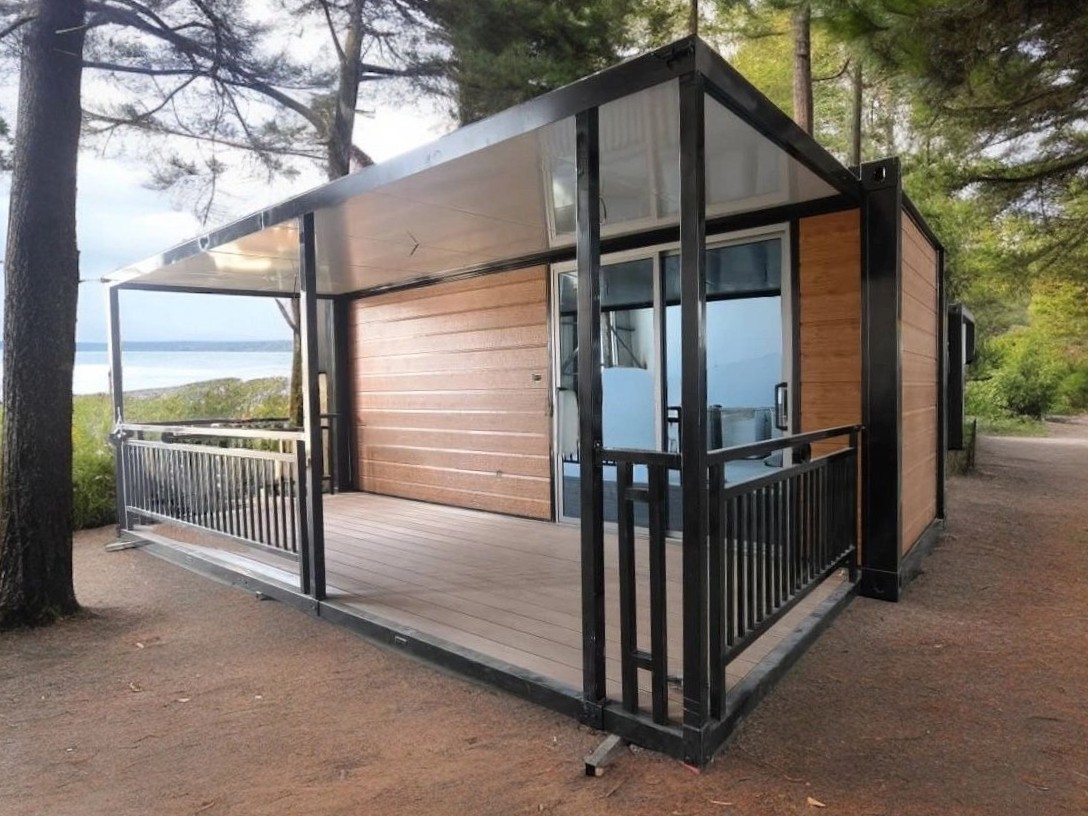
UtilityMate Manufacturing used to be known as Trailers International, LLC., which has produced UtilityMate cargo trailers and other trailers for more than the past two decades. The biography offered by UtilityMate says:
The founder of the business has been designing and building trailers for nearly 30 years. In celebration of the founder, the company has created a line of “Camper Trailers that truly exudes the timeless beauty from the outside to the inside”. Looking at the classic stainless exterior designs to its retro-inspired interiors, the impeccable craftsmanship and the attention to detail are evident in every aspect of their work. After years of business, planning, and product development, the vision for truly a “Best of Class” from a bygone era has now become a classic reality.
The Tiny Skye
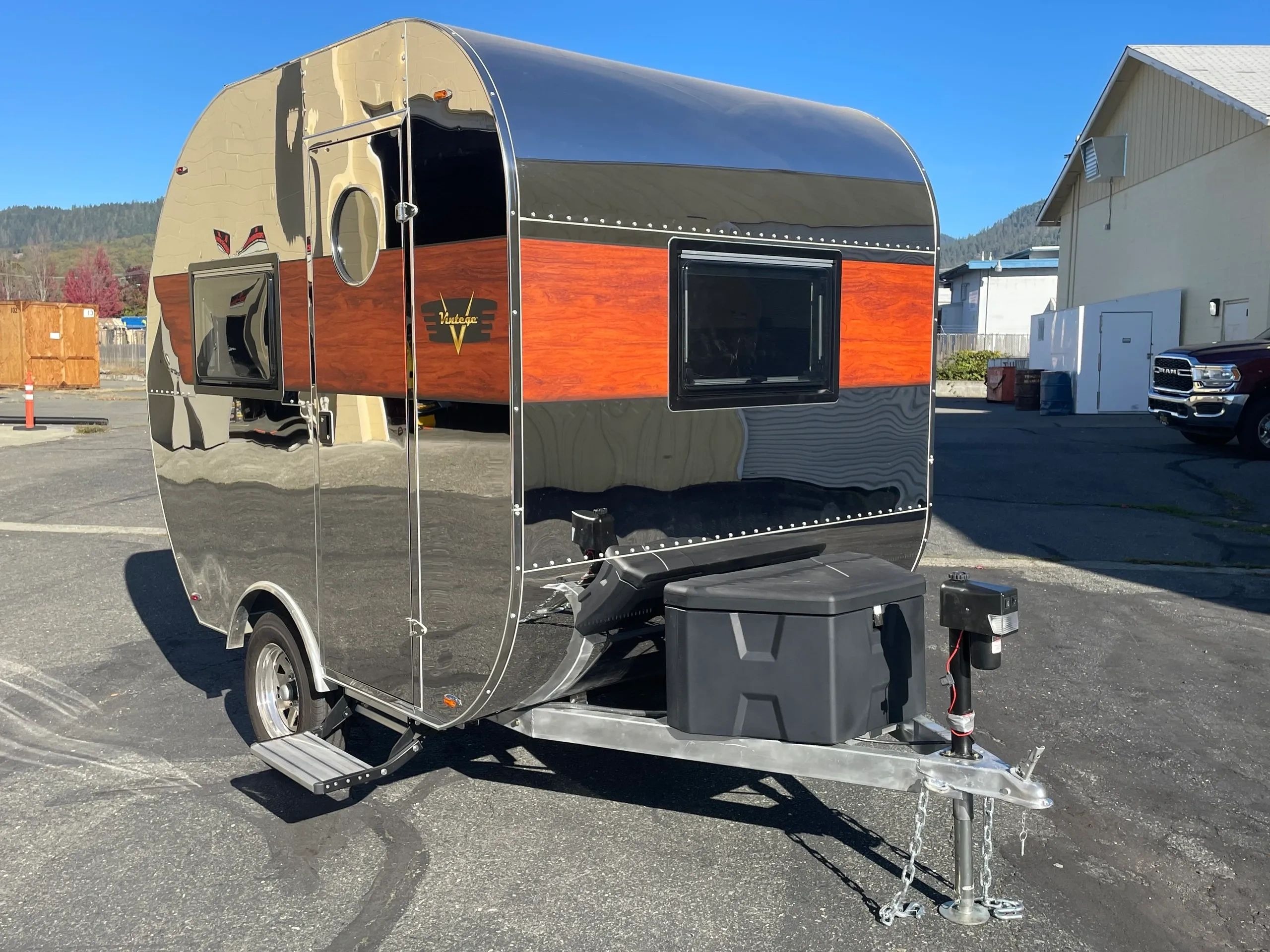
UtilityMate’s only travel trailer product right now is the Vintege Skye, a tiny 14-foot camper with a unique design.
What I find fascinating about the Vintege Skye is that it looks like it’s built out of polished aluminum, but it’s not. UtilityMate says the Vintege Skye has a body made out of polished stainless steel panels. Under those panels is a skeleton that’s made out of galvanized and welded steel. If you’re wondering why these things use a whole lot of steel instead of aluminum, well, UtilityMate says:
“Simply put, comparing stainless to aluminum is like comparing armor to a tin can.”
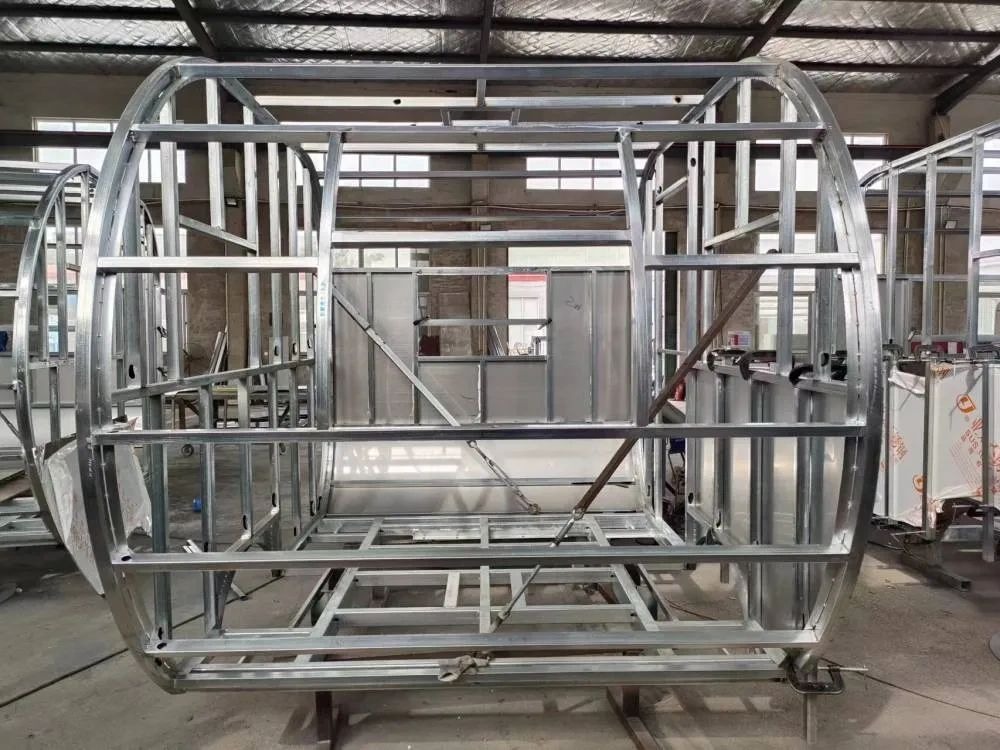
I cannot comment on the build quality of the Vintege since I haven’t personally seen it in person, but at lesst it looks like a sturdy unit. At the very least, the materials here blow a stick build out of the water. Some older all-metal camper designs used stainless steel, so this sort of build isn’t unheard of.
Confusingly, UtilityMate does not list an unloaded weight, instead noting only the trailer’s gross axle weight rating of 2,640 pounds. For comparison, a Scamp 13 fiberglass camper has an empty weight of between 1,200 and 1,500 pounds with a gross weight of around 2,200 pounds. Meanwhile, a Happier Camper fiberglass camper weighs 1,100 pounds empty and has a gross weight of 3,500 pounds. This is all to say that, without an unloaded weight from the manufacturer, it’s hard to say how heavy this thing is. But, it’s probably at least a touch heavier than a Scamp 13. Tow this thing with a vehicle that can haul 3,000 pounds and you should be okay.
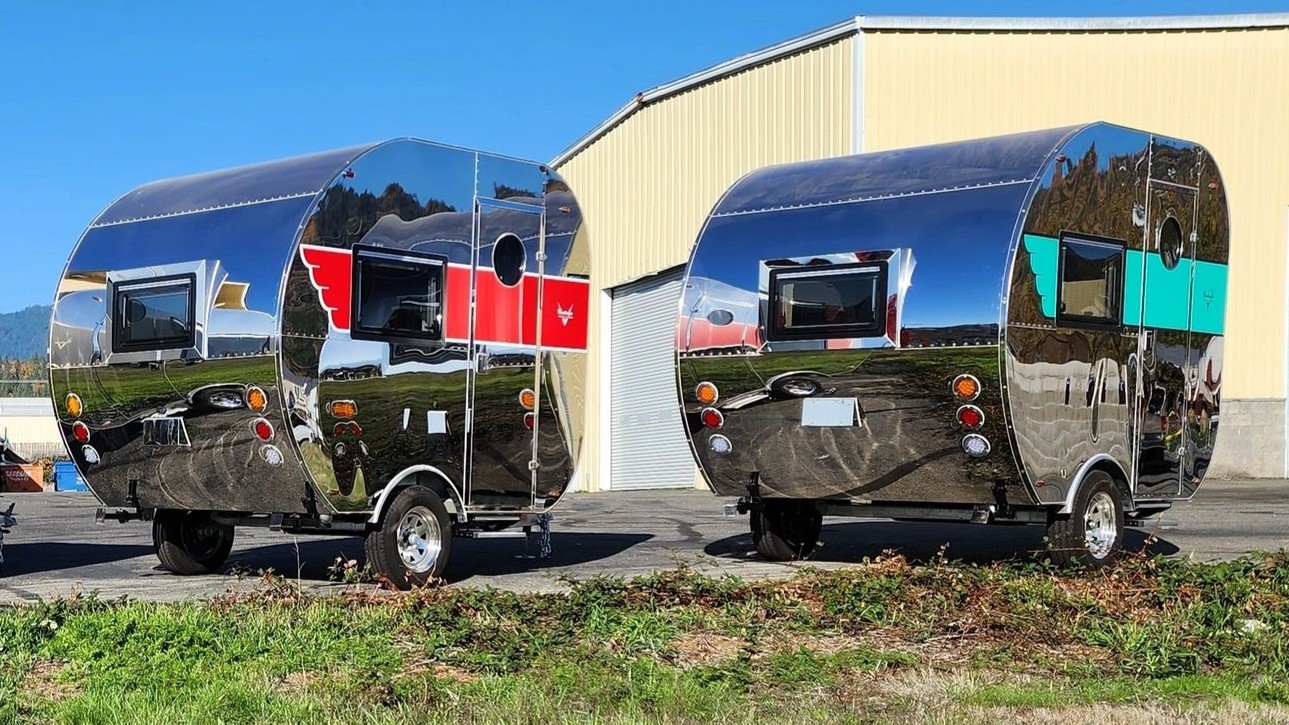
Before we move inside, something neat about the Skye is that you can get the exterior with some pretty cool old-school decals, so you can probably match your tow vehicle, or just get it in bare polished stainless.
Moving inside, there’s a small, but cozy cabin. I dig the continued use of stainless steel in here, which gives it a bit of an Airstream or Bowlus vibe. The front end of this trailer doesn’t really look vintage at all outside of the exposed metal, but things do change as you move back. The dinette, which transforms into a bed, resembles a vintage diner booth. Also, look at those walls!
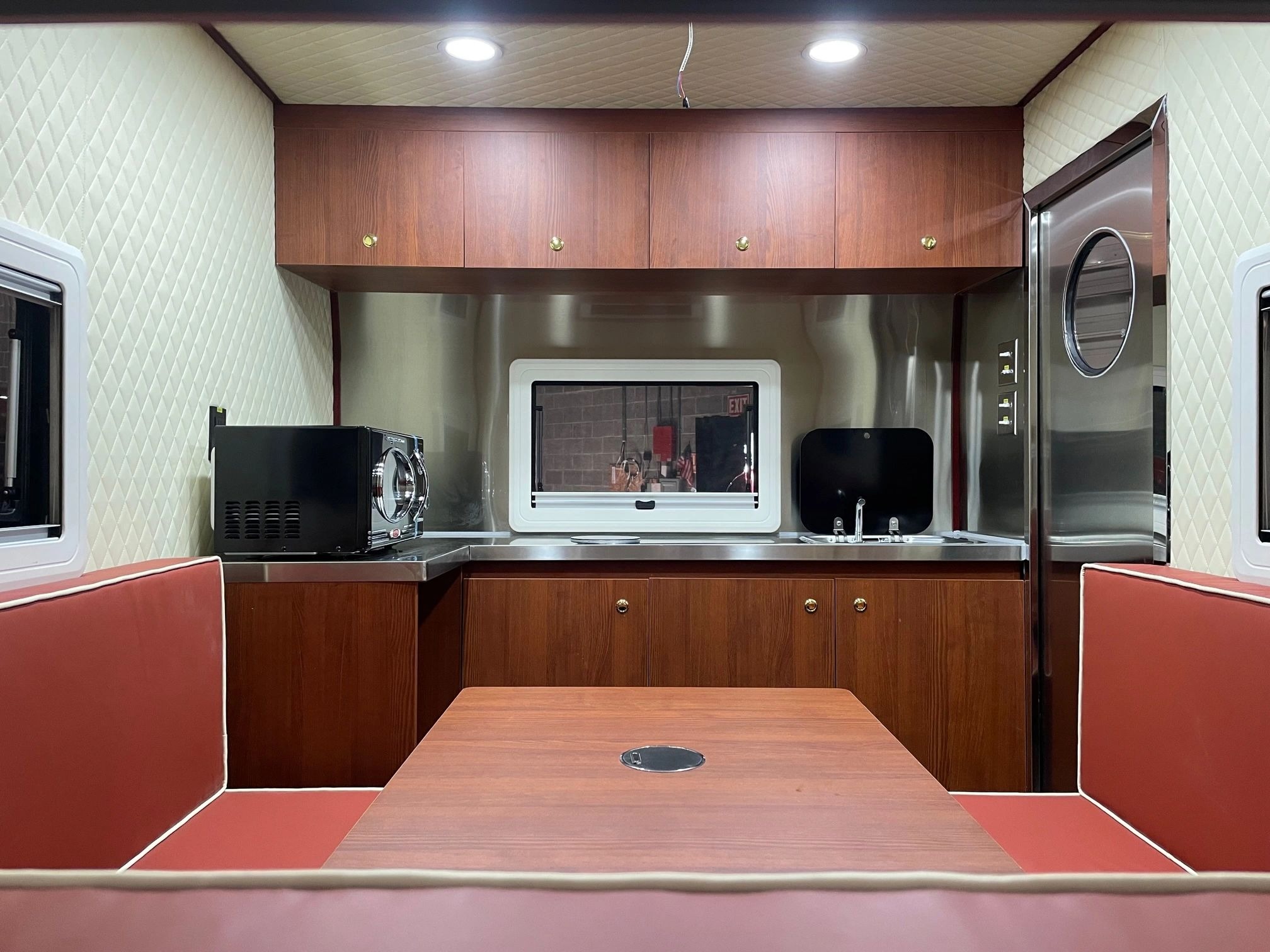
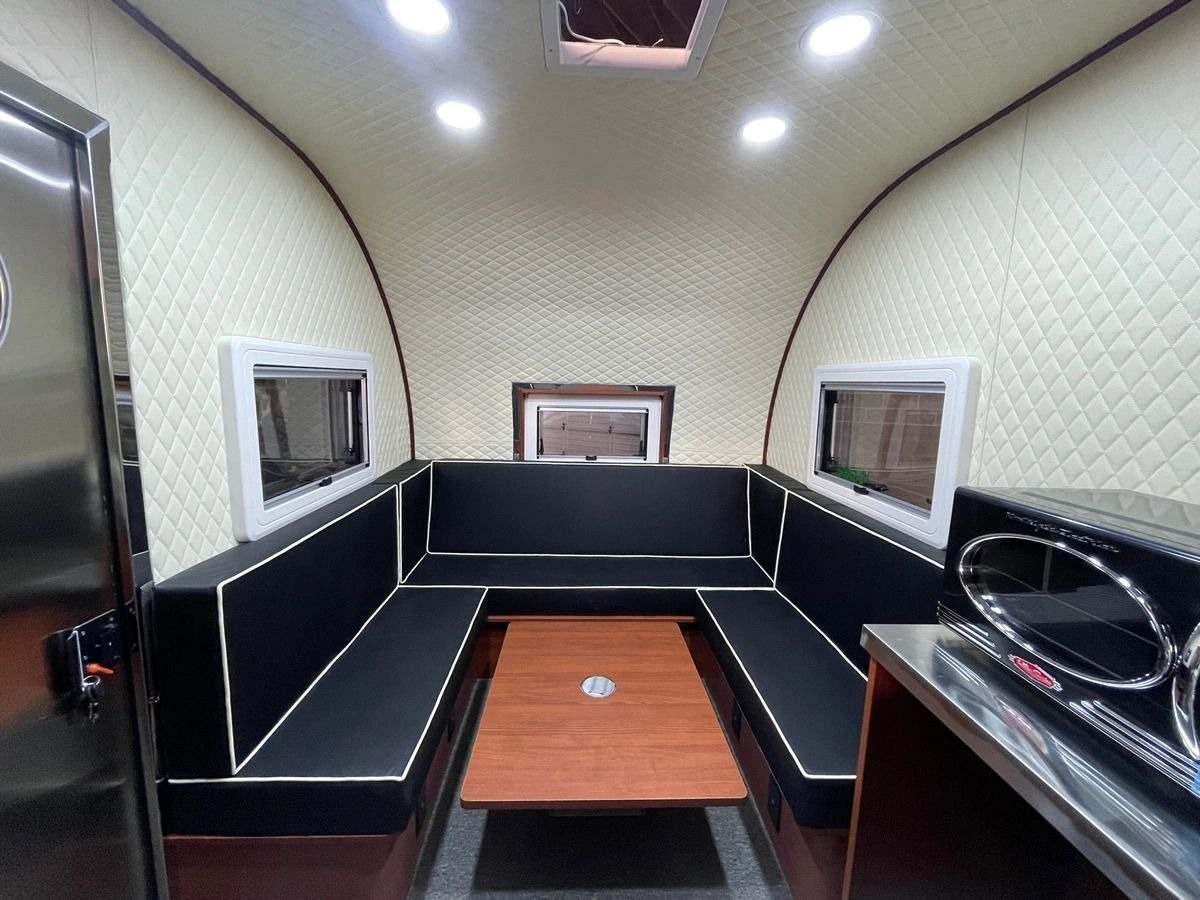
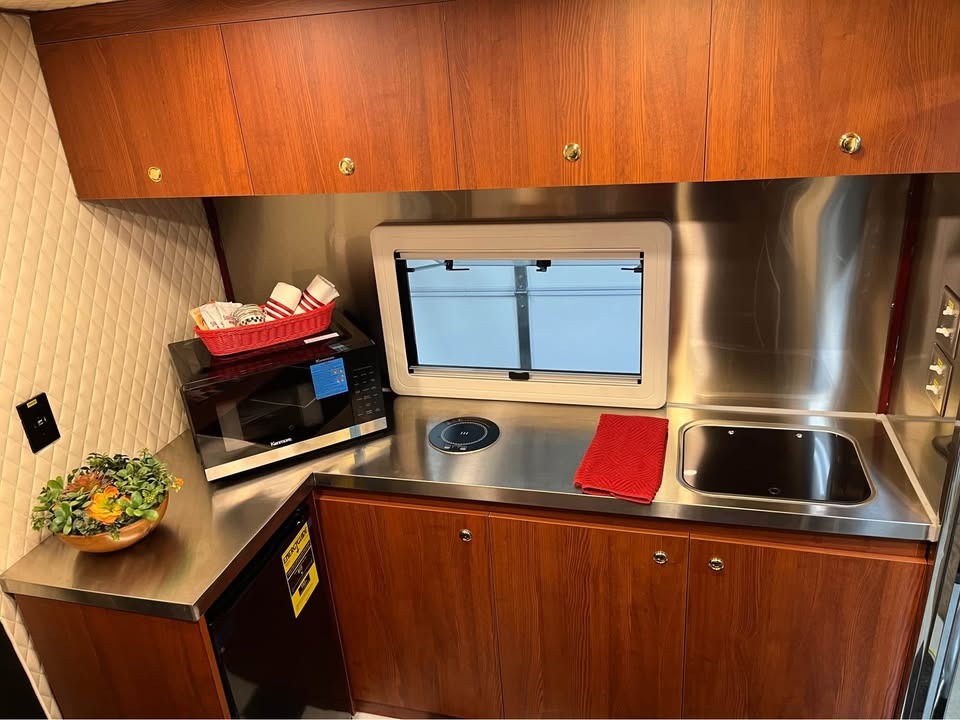
Another departure from the norm is that UtilityMate’s brochure is devoid of detail. It’ll tell you that there’s 6’8″ of headroom in there, which is great, and that you get a 10.5-gallon fresh tank plus a 15.85-gallon gray tank. The company offers no details about whether there are options for shower facilities, heat, cooling, or a toilet. I can see a microwave, an electric stove, and a refrigerator, but I shouldn’t have to look at a photo gallery to figure out what features it has.
A Good Idea, Bad Marketing
Another thing that UtilityMate won’t tell you on its website is how much the Vintege Skye costs, which, to be fair, is the norm for RV manufacturers. That said, I did find a 2024 model listed for sale in “new” condition on Facebook for just $13,995. If that price is even remotely reflective of what these cost new, that’s really good!
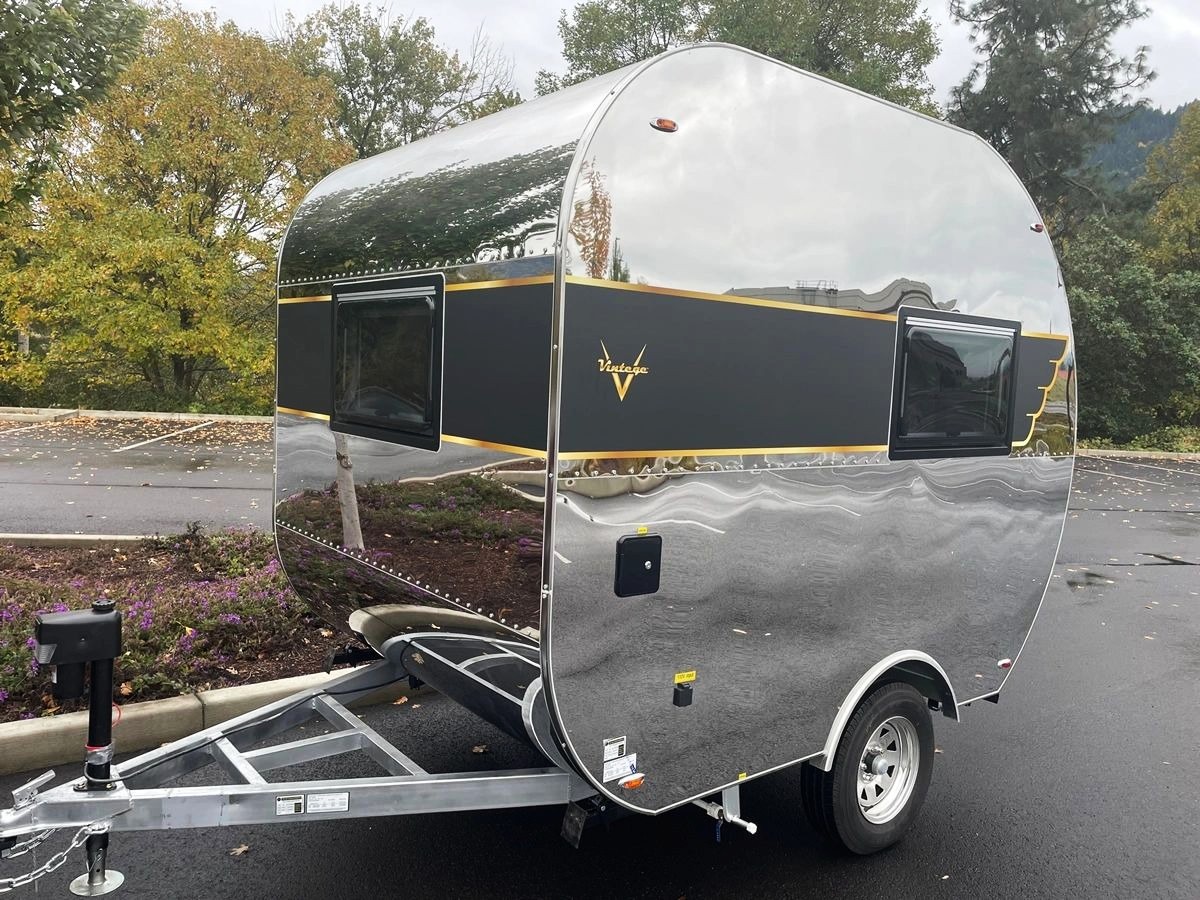
This is why the headline says that the camper has terrible marketing. RV buyers want to know how much the base weight is, and they want to know how much the tongue weighs. They also want to know how much it costs, where you can get it serviced, and what features it has. UtilityMate has basically none of that on its website. I’m sure the fine folks running the company will tell you everything that you need to know if you call them, but you shouldn’t have to do that. So, if I could provide constructive criticism to UtilityMate, it is that the website and brochure need some wrenching.
With that said, I have reached out to UtilityMate to get the answers to the questions that I’m asking here.
So, I love the idea of this camper. I’m a sucker for polished metal, and it’ll probably last a long time. At the very least, I love the fact that there’s a ’50-style metal camper for sale that’s only 14 feet long. I hope more manufacturers keep giving options on the small side of the travel trailer market, because this is awesome to see!

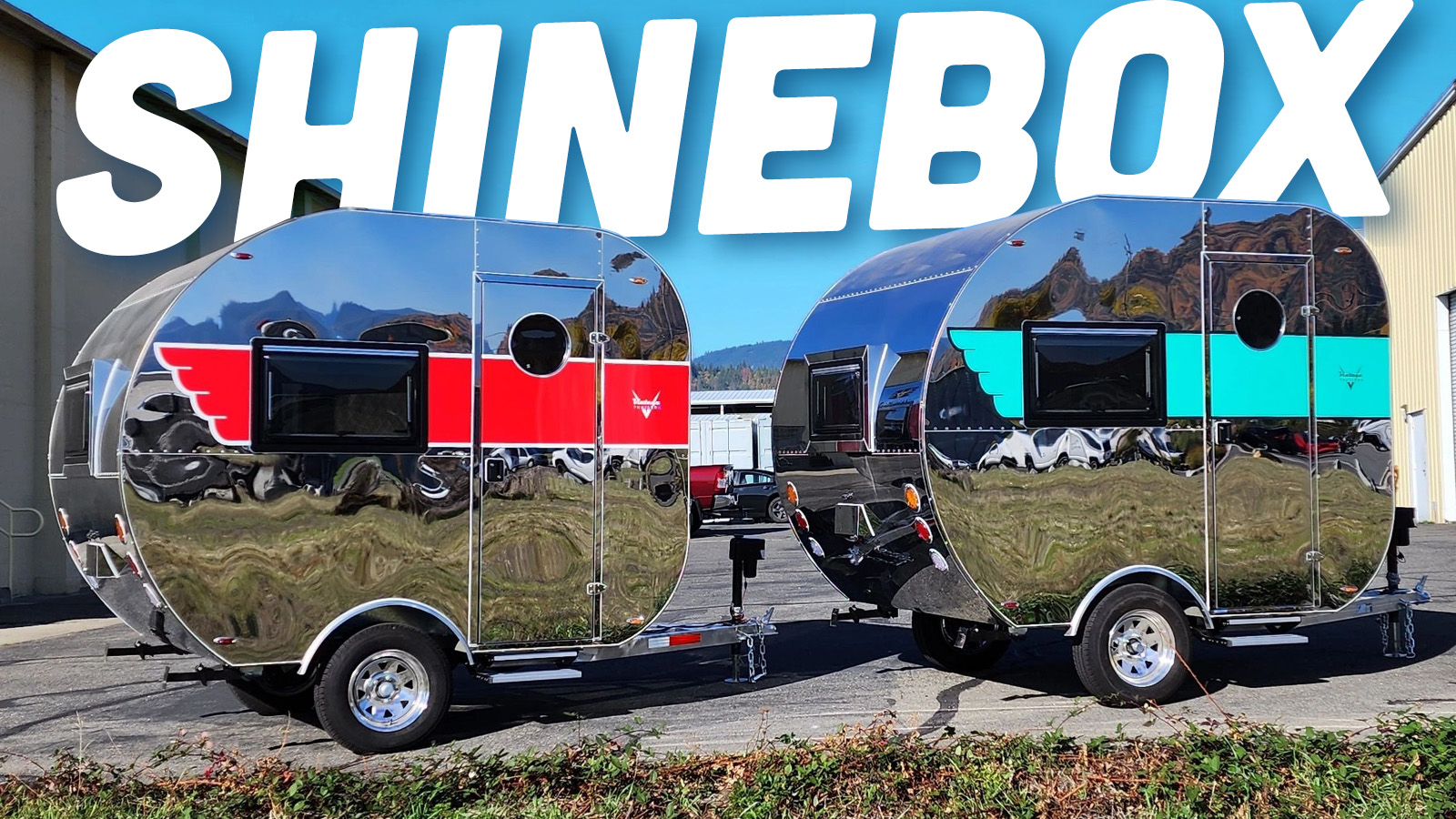




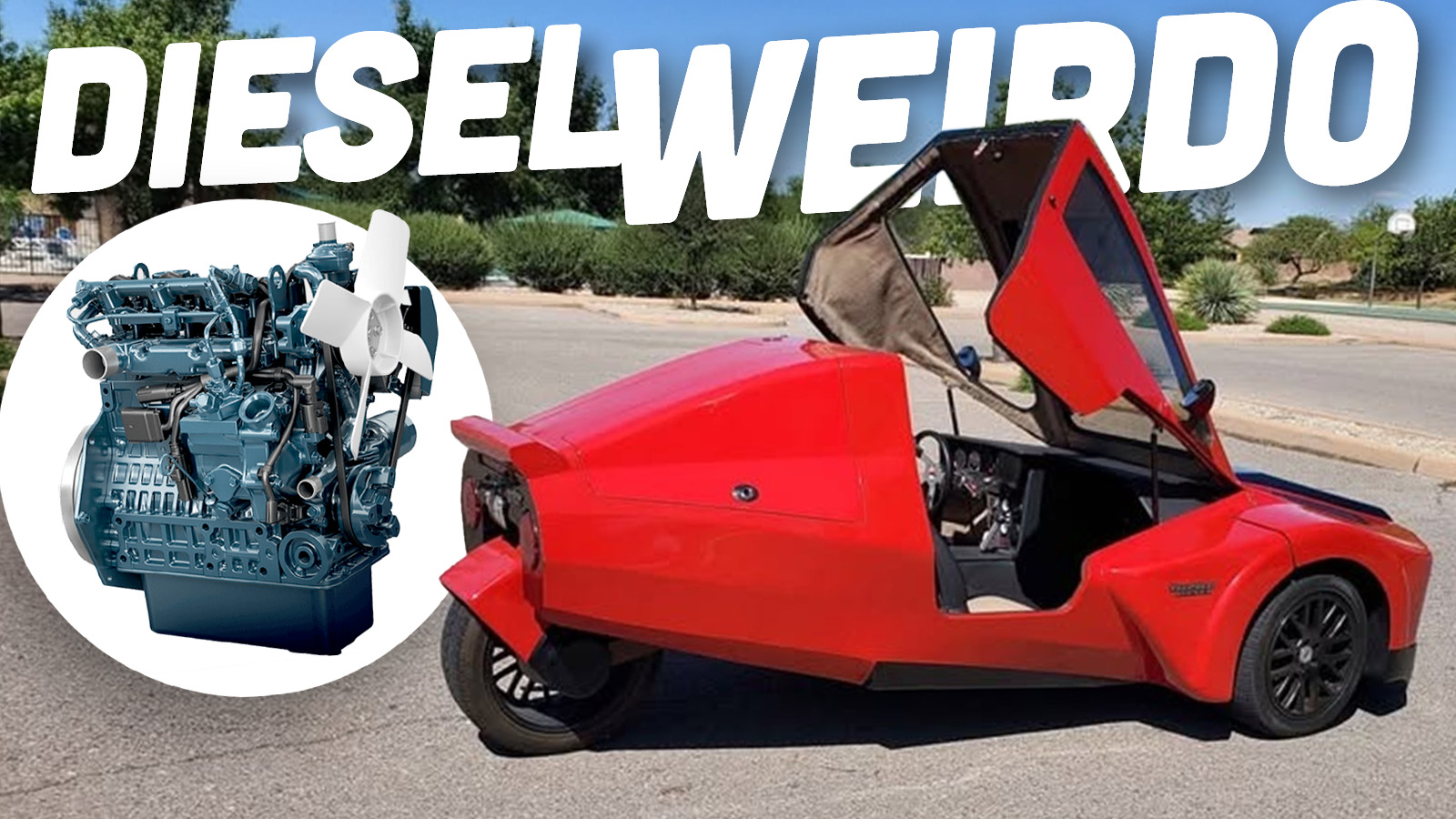

Those are pretty cool looking! Can confirm, their website sucks. I was curious about their ADUs, but it’s all pretty vague on there.
Stainless steel is pointlessly heavy. Example: the Delorean, which is iconic more for the BTTF movies than for being a good vehicle, mostly because in terms of being a good vehicle it’s somewhere between An Car and something of a disappointment. The engine is underwhelming and has serious longevity issues, it looks faster than it actually is, the windows don’t open or close properly even though the doors are normal car door thickness, and underneath all that stainless, is a fiberglass skin — the panels are purely decorative, which is a huge missed opportunity to do something with what otherwise is best done with a coat of paint. At least Airstream used aluminum.
Also, in terms of “armor vs tin can” — false dichotomy, on multiple levels.
For one, actual steel armor in the modern sense is something like a bare minimum of an inch thick, and it’s not your common mild steel, either, if you use that it will cause spalling inside your homemade tank — basically, bullets that don’t penetrate cause shrapnel to shed inside the tank from the point of impact, and if they DO punch through it’s even worse.
Not only that, but historically aluminum was even more valuable than gold, and sometimes even platinum, because finding it in the wild is unimaginably rare — normally it’s only encountered in its ore form, bauxite, and the only way to liberate the aluminum from bauxite, as far as we Earthlings know, is to use an electric arc furnace. Nothing else does the job.
What’s more, also historically, the European broadsword wasn’t used the way you probably think it was. It didn’t slice and dice like the Japanese katana. European armor really WAS like being in a tin can — or an unairconditioned mobile home in a North Carolina summer ;3 the metal was uniformly at least somewhat rusty, and metalsmithing tech at the time meant that visibility and even mobility were severely hampered at best. A broadsword was used, simply put, as a big metal club, because one solid hit from it would cause that armor to ring like church bells on Christmas morning. You’d be deafened from the racket, even if you didn’t just faint dead away from sensory overload — or being trampled by the horse you either just fell off of or got knocked from, which is now panicking and running around like a blame idiot, beating anything under its hooves to a soggy pulp (the phrase “wild horses couldn’t keep […]” exists for a reason!).
On top of everything else, one of the biggest reasons everyone who’s into Airstreams and has any sense to themselves is into vintage Airstreams, particularly 70s and older, is because “modern construction methods” is a code phrase for “we put it together with carpentry staples and didn’t care to bother with anything better”. Modern trailers are built like cut-rate mobile homes.
If you want to stand out from the crowd, you don’t just need good advertising, you need a good product. Between this and a 1950s Airstream with an at-least half-decent shell and a hopeless interior and plumbing/electrical system in abject despair, I’m picking the Airstream every dang time, and I’m mobility limited — which, for me, just means it’s a project that will take a whole lot longer to complete, but that will be that much more satisfying in the end.
Stainless steel and most other alloys are steel, are roughly the same weight. The idea that stainless is some oddly heavy alloy is just false.
DP600: 7.7 g/cm3
A36: 7.8 g/cm3
1018: 7.9 g/cm3
4140: 7.9 g/cm3
304SS: 7.9 g/cm3
Yes. Steel is made out of steel. Aluminum is also in fact made out of aluminum (or aluminium if you’re in… well, most of the rest of the world) and in fact has no steel in it, and is therefore much lighter. Fiberglass (or fibreglass, if you live in a more sophisticated place on the globe) is, strangely, woven glass-fiber mat combined with plastic, rather confusingly… but it also is devoid of steel, and is therefore significantly lighter as well.
Not such a great idea to be towing a mirror reflecting the sun right into the eyes of other drivers.
I was just thinking the same thing.
My thoughts exactly.
There’s going to be some serious galvanic corrosion between the stainless and the galvanized frame.
Serious corrosion? Maybe if bathed in saltwater, but otherwise, I’d think the zinc could handle it. It would be the zinc that took the brunt of any corrosion anyway.
Actually it is not recommended to use the two metals together due to high galvanic reactivity. The reaction rate is higher in humid or marine environments. I’m sure that if properly isolated by coatings the reaction could be reduced.
Look it up, I did.
I did. And I reached essentially the same conclusion as you. It’s not ideal, but probably not a problem in this use case. I’m going to be a huge jerk and say that I think you stopped with the AI summary. I will go further by saying that I think you are correct that galvanic corrosion will occur, however I still believe you are incorrect that it will be serious. Now, taking my jerkiness into downright asshole territory, I am going on what the American Galvanizers Association has to say on the matter and I’m sticking with their assessment over yours. 🙂
Next time, perhaps consider that I considered what I was saying before I said it. I often sound almost offensively sure of what I’m saying, because I usually am. Apologies for that.
Now, just so you know, I wasn’t trying to challenge you with my reply. The only reason I did say anything was because I was concerned that people might unfairly get the impression that the design of this product was inherently flawed, when in fact, it is probably not. You did indeed raise a point of concern, but upon further investigation of what I suspected, in this particular use case, galvanic corrosion should not be serious.
Yeah, sure.
Brodozer with mis-aimed halos and led lightbar forced to tailgate one of these ain’t gonna be too happy.
Sitting in the morning sun
Watching my finish starting to run
I’ll be here when the evening is done
And my finish is clearly done
Left this morning from Georgia
My finish is clearly done
Just sitting on the dock of the bay
Watching my finish fade away
Sitting on the dock of the
Wasting time polishing the grey.
it looks good! but why is there four feet between the end of the living space and the front of the trailer? seems like they could have added 2 more feet of living space at least.
Sharp turns.
spot for the cargo box for all the junk actually needed to use a trailer (hoses, cords, tools, etc), propane tanks, may some batteries.
they leave all the non-sexy bits off in the promo materials.
Just wondering how well insulated it is. With metal on the outside and inside being a good conductor of temperature, both hot and cold something has to insulate
“Some of these new rigs are also built well.” Damning with faint praise.
Stainless steel is poorly named since it stains horribly and almost immediately. Especially polished stainless since nothing is hidden, very poor choice. It will look like it’s been submerged is a swarm in short order. You do not have the elbow grease, the time or the fortitude in you to keep this thing looking nice. Take it to the beach and the salt air will eat it alive. Hopefully it’s got some sort of lacquer coating to protect the finish., that would save it until it wears off or oxidizes in the sun, like the clear coat on your car. A painted aluminum skin is the way to go for longevity.
Wax.
I’m guessing $22k.
Wouldn’t the sun reflecting off this sear the eyeballs? I would hate to be stuck behind this traveling East while the sun is setting.
That definitely would be a worry, maybe there is enough curve to disperse it at least from behind.
I remember getting stuck behind semi-trailers with mirror-like rear doors being true misery.
Mercedes, I appreciate getting a chance to see all of these cool RVs, however:
They did not respond to your questions via call/text/email?
Not yet! Could be because this was late on a Friday.
Man, that stainless steel isn’t going to be much thicker than the proverbial tin can if they want to keep the weight under control…
That’s a LOT more headroom than any fiberglass egg trailer! The interior is so modern and residential and minimalist that it doesn’t resemble a camper. It looks like a tiny home, with very small windows. It looks static and doesn’t suggest travel. The polished stainless exterior is appealing. With a strong sky reflection, it might appear to vanish. I wouldn’t want to drive behind it at night, though. The shiny rump would reflect headlights horribly.
Please tell me the topshot is a Goodfellas reference…
Go get it ABarthy!
“If I was busting your balls, I’d send you home for your shine box.”
I’d nickname my camper Spit-shine Tommy.
That frame looks fully hot-dip galvanized which is absolutely fantastic, as that’s what U-Haul does and we know those are built to last. Judging by the axle placement, tongue weight looks stable enough. GVW has to be less than axle maximum which means under 2,500lbs and thus towable by all but sub-compacts and micro cars. Judging by eye, I’d guestimate it weighs about 1,750lbs dry, but WTF do I know?
If the price is anything around $15k, it seems like a steal to me. I couldn’t care less about the poor marketing or a bathroom within a footprint that small, but I do want to know if it has brakes or not. I hope it has brakes. I think I see a 7 pin in one of the photos so probably.
Two thumbs up (with brakes)
Electric brakes could be added to any trailer that size, I think. They use standardized components.
I’ve been told electric brakes are getting more common on smaller campers industry-wide, even ones light enough not to technically require them, reason is more and more people are sizing down their tow vehicle in proportion to the trailer they’re towing, and it just adds an extra level of safety with a smaller vehicle. My Viking Express is only 1254 lbs dry, and it had them from the factory as standard
I wouldn’t tow a small camper without brakes. The number of self-absorbed idiots texting while driving means more panic stops avoiding these cretins. Stopping in a regular car distance because the camper is stopping itself is welcome.
When I was a kid, my folks had a Starcraft pop-up that I believe had electric brakes, and this was 30 years ago. I vividly remember my dad locking up the trailer brakes as he was trying to adjust the controller as we were driving down the street with it for the first time.
Preach! I actually did exactly that a few years ago to my small aluminum frame cargo trailer that came without brakes. Complete with break-away system and a bunch of other mods like a built-in toolbox, stereo, battery, inverter, converter, DC to DC charger, fold down plywood cargo panels, extra floor tie downs, etc. It’s pretty trick.
Can I interest you in a pair of free Dexter one ton spindles in pristine condition with only 25 unloaded miles on them? 😀
If they really are $14,000, or, even just sub-$20,000, this looks like a hell of a lot of build quality for the price. Compared to, say, an $11,000 Coleman 13B, there really is no comparison. It is still impressive what they’ve managed to do at that price point, don’t get me wrong, but a Vintege looks like it has a decent chance of surviving a first owner and still be in good shape by the time it gets to a 2nd or 3rd owner
If these are $14k new, and the quality is decent, that price is a lot better than “pretty good”.
Well … a used one is 14k … so I new one is probably closer to or above 20k